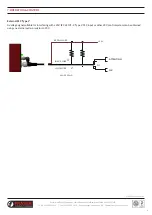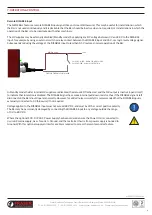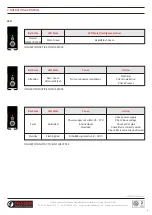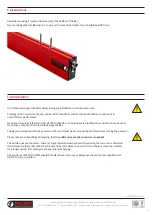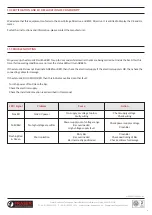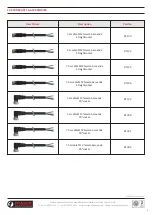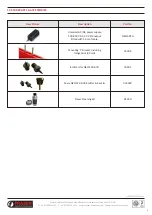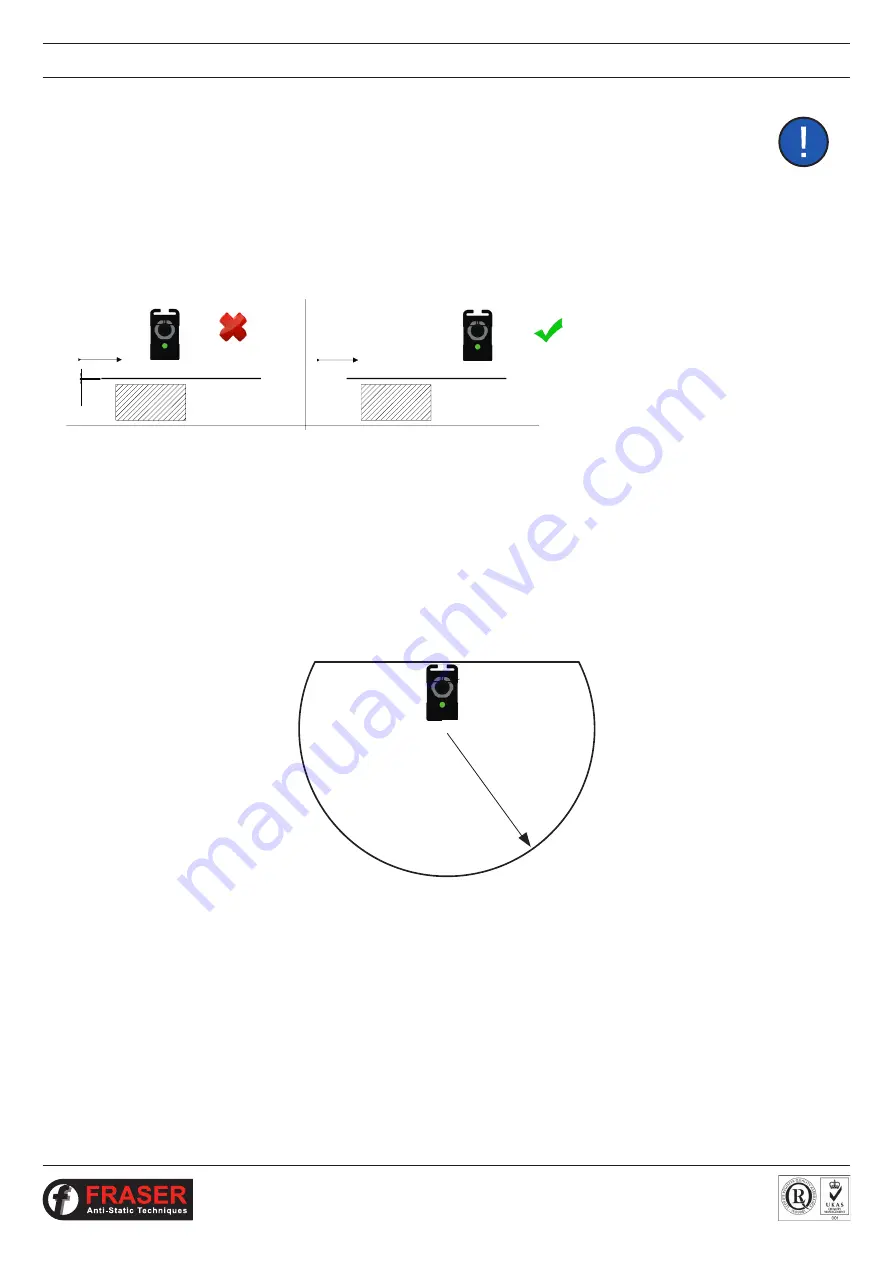
Fraser Anti-Static Techniques, Scotts Business Park, Bampton, Devon EX16 9DN, UK
T + 44 (0) 1398 331114 F + 44 (0) 1398 331411 E sales@fraser-antistatic.co.uk W www.fraser-antistatic.com
12
NEOS 30 OEM-DM-Iss.2
6. POSITIONING
The best location is at, or immediately before, the area where static is causing the problem. Remember that
static can be regenerated if the material passes over rollers or through a process after neutralising. A Static
Meter is useful to determine the best position.
i.
Important: Except on a winding reel of material, the material to be neutralised should be in free air, not
touching another surface as it passes the Bar. It is not possible to neutralise static electricity where the
material is touching another surface or roller.
ii.
The Bars must be dry and oil-free.
iii.
It is important that the emitter pins are not touching, or close to metal objects, to avoid spark erosion that
will damage both the Bar and the metal object.
iv.
The distance from the material should be:
NEOS 30 OEM: 200 - 1500 mm
v.
1.0
R60.0 MIN DISTANCE FROM
ANY EARTHED OBJECTS OR METAL
PLASTIC
PERFORMANCE LEVEL
NEOS 12 F
PERFORMANCE LEVEL
NEOS 12 L
MATERIAL
MATERIAL
FREE AIR
MATERIAL
NO OBJECTS IN THIS AREA
x
x
x
x
MATERIAL
FREE AIR
MATERIAL
R = min. 300 mm
Area to be free of all
ground references
1.0
R60.0 MIN DISTANCE FROM
ANY EARTHED OBJECTS OR METAL
PLASTIC
PERFORMANCE LEVEL
NEOS 12 F
PERFORMANCE LEVEL
NEOS 12 L
MATERIAL
MATERIAL
FREE AIR
MATERIAL
NO OBJECTS IN THIS AREA
x
x
x
x

















